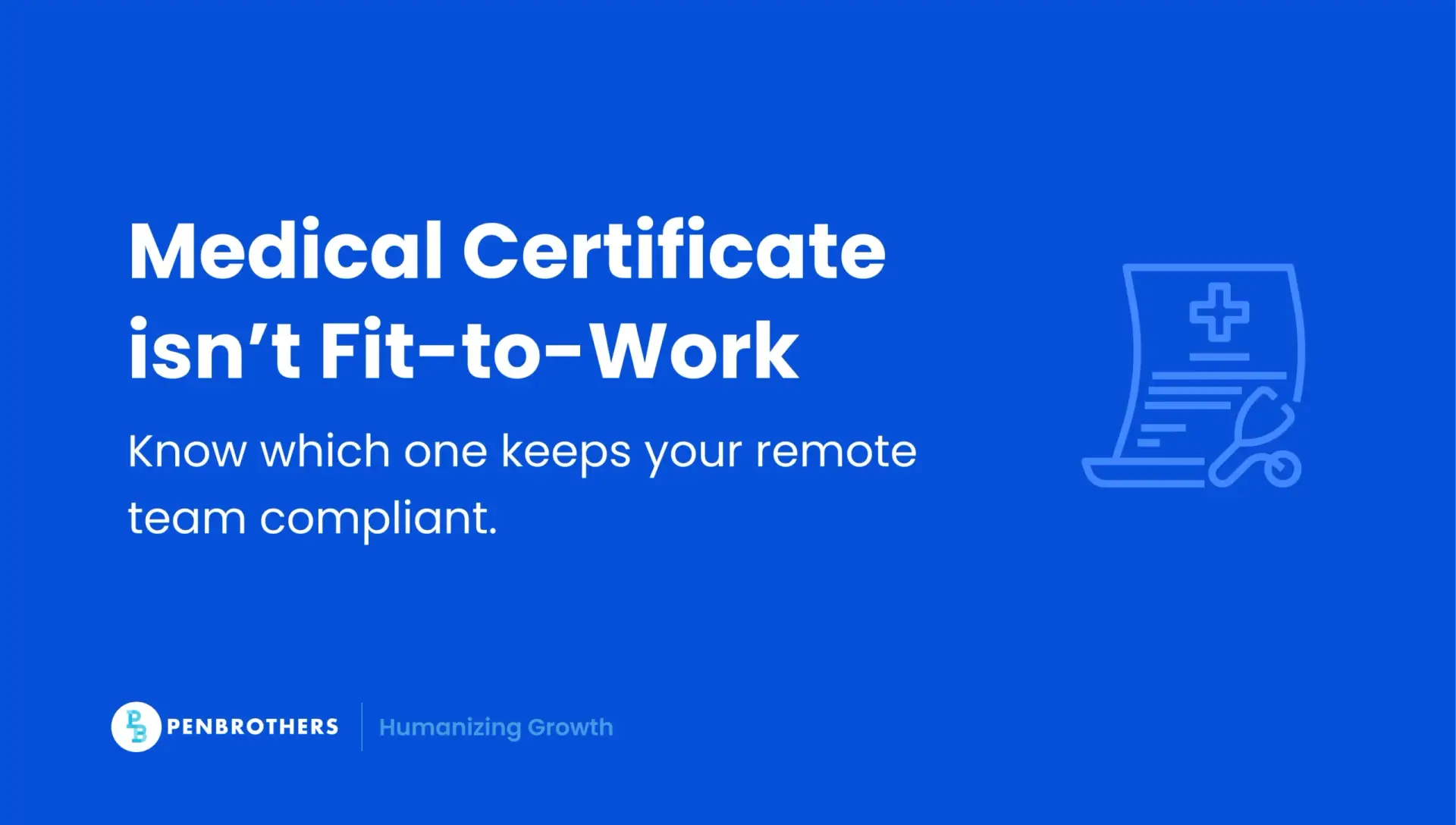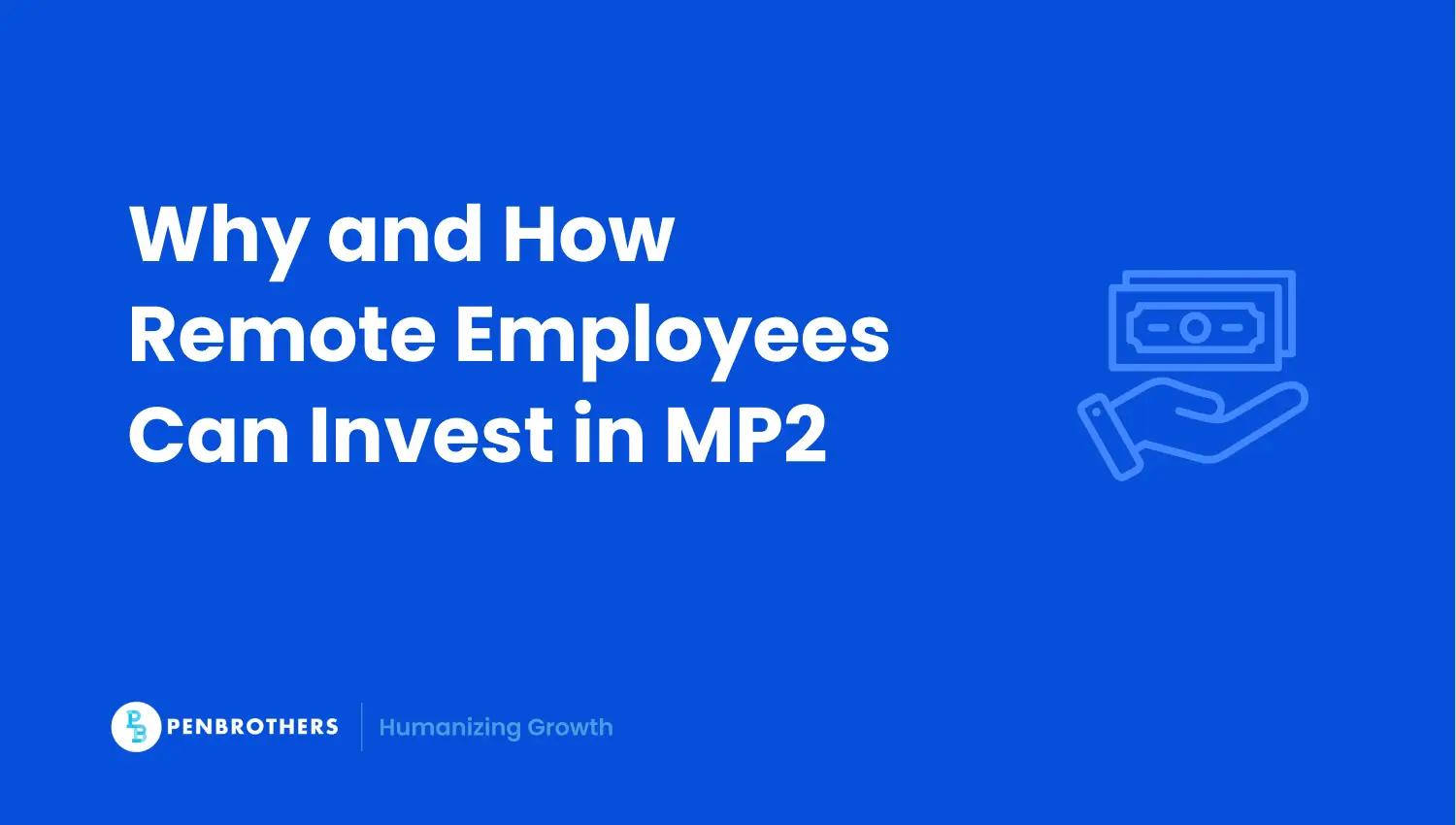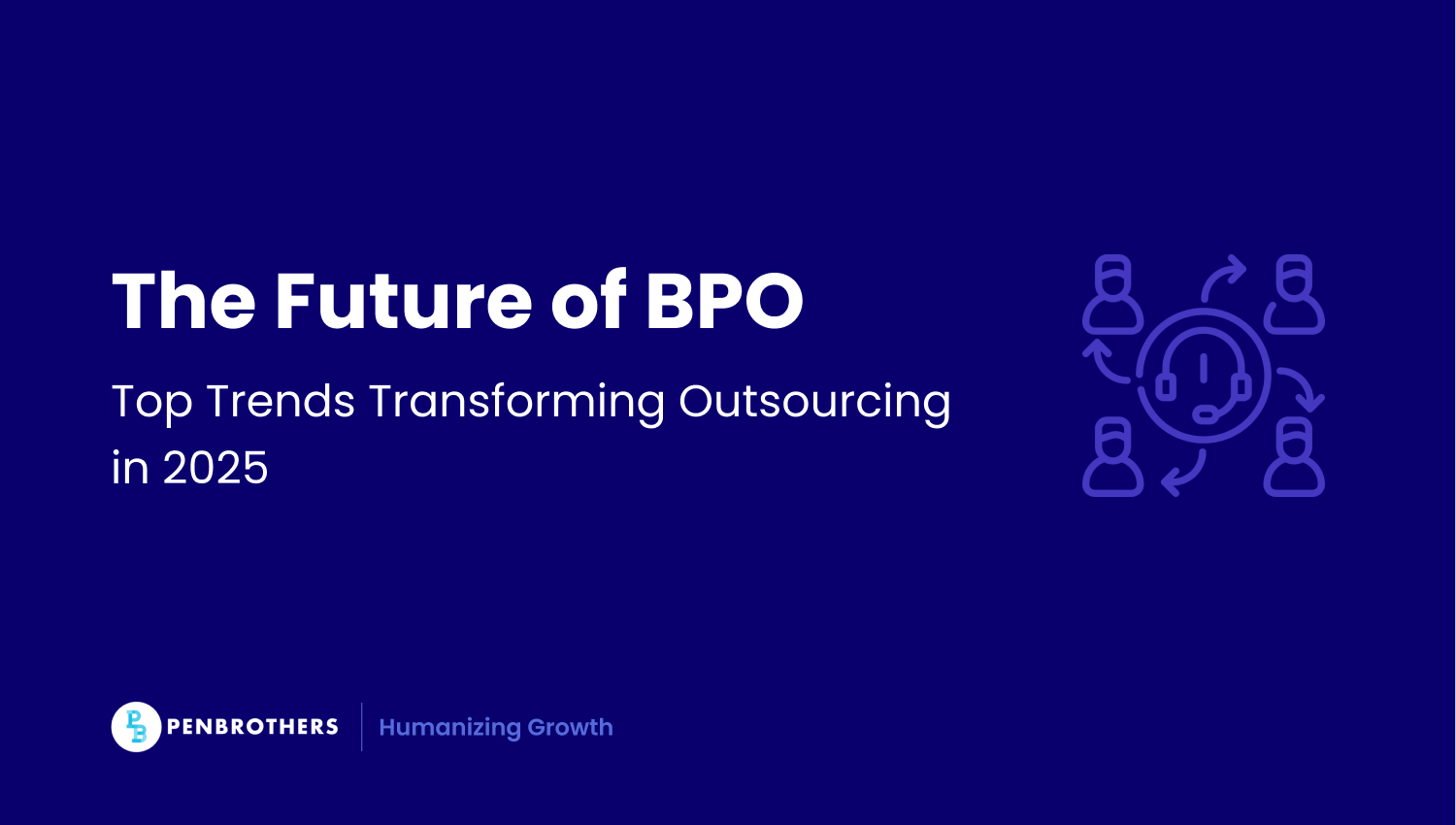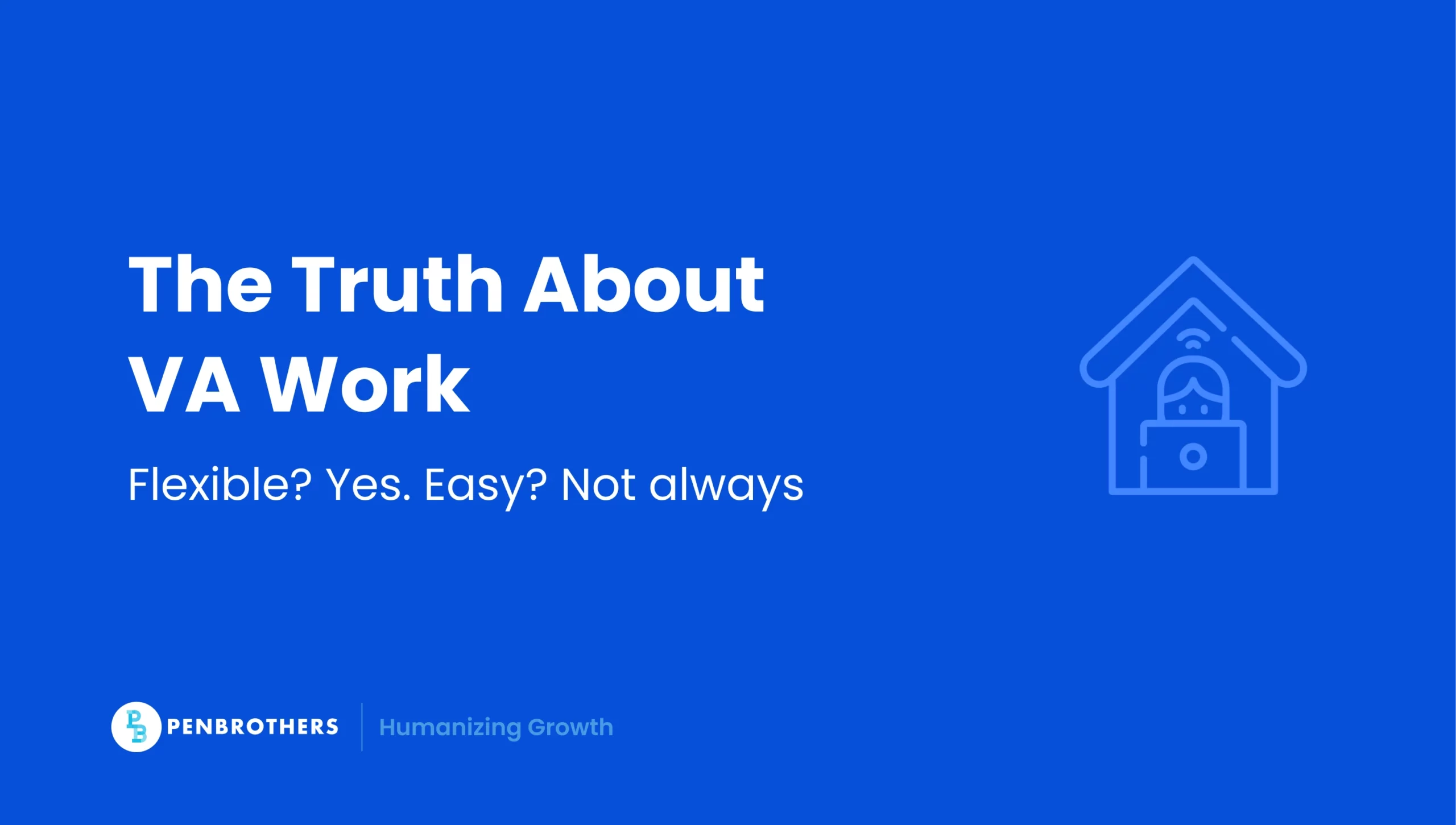What's Inside?
Medical Certificate versus Fit-to-Work: What Remote Workers Need to Know

Key Takeaways
- The medical certificate proves illness; the fit-to-work certifies recovery.
- Both are essential for payroll accuracy, compliance, and employee well-being.
- Digitized, verified, and privacy-safe processes strengthen HR accountability and trust.
Remote work has transformed how companies manage attendance, wellness, and compliance. But one area remains a gray zone for both employees and HR: medical and fit-to-work certificates.
In traditional office setups, these documents are easy to validate as employees hand them over physically, and HR files them for payroll and compliance. In remote setups, however, everything happens online. Verifying authenticity, protecting data, and ensuring fairness become far more complex.
This guide clarifies the difference between a medical certificate and a fit-to-work clearance, explains when each is needed, and outlines how HR and remote employees can stay compliant while maintaining trust and empathy.
What is a Medical Certificate?
A medical certificate is an official document issued by a licensed physician certifying that an employee is ill or unfit to work. It’s commonly required when filing for sick leave, SSS sickness benefits, or when an employer needs official proof of incapacity.
Under DOLE and PRC guidelines, a valid medical certificate should include:
- The doctor’s full name and PRC license number
- Date and time of consultation
- Diagnosis or nature of illness
- Duration of recommended rest or treatment
- Physician’s signature and clinic information
In a remote setting, this document is even more critical as it validates an absence that HR cannot physically confirm.
Compliance reminder: Never accept self-issued or “template” certificates. Only those from licensed practitioners are valid under labor and SSS rules.
What is a Fit-to-Work Certificate?
A fit-to-work certificate is a medical clearance stating that an employee has fully recovered and is physically and mentally ready to resume work duties. It is typically issued by the same physician who treated the employee or another licensed practitioner who verifies recovery.
In onsite work, this ensures employees don’t return while still contagious or unfit. In remote work, its importance is often underestimated, but it remains a key safeguard.
For remote employees, a fit-to-work certificate:
- Confirms they’re fully recovered before resuming responsibilities
- Protects the company from compliance issues or misreporting
- Serves as HR documentation for proper timekeeping and payroll reinstatement
When HR should require a fit-to-work clearance:
- Absences longer than three consecutive days
- Communicable diseases (e.g., COVID-19, influenza)
- Post-hospitalization or injury
- Mental health-related leaves
- Occupational fatigue or burnout cases
Even in remote roles, fit-to-work certification ensures the employee is genuinely ready. Not just logged in but performing safely and effectively.
Medical Certificate vs. Fit-to-Work: Key Differences
| Criteria | Medical Certificate | Fit-to-Work Certificate |
| Purpose | To excuse absence due to illness | To certify readiness to resume work |
| Timing | Issued during or right after illness | Issued after recovery or treatment completion |
| Issued By | Licensed physician after consultation | Same or another doctor after re-evaluation |
| Used For | Sick leave filing, SSS benefits, absence validation | Work resumption clearance |
| Verification | Validate PRC license and clinic info | Verify date, doctor’s note, and signature |
| Remote Relevance | Confirms legitimate sick leave | Confirms safe and complete recovery for remote work |
Both documents serve different but equally vital purposes. For HR, they ensure fair payroll processing and labor law compliance. For employees, they formalize accountability and protect against disputes.
How to Get a Medical Certificate (In-Person or Online)
Whether an employee is consulting in person or remotely, the process should meet standard medical and compliance criteria.
In-person process:
- Schedule a consultation at a clinic or hospital.
- Undergo a physical examination.
- Receive an official, signed medical certificate with details of diagnosis and rest period.
Online process:
- Book a teleconsultation through accredited platforms like Doctor Anywhere, NowServing, or KonsultaMD.
- The doctor assesses symptoms through video or chat consultation.
- Receive a digital medical certificate via email or app complete with electronic signature, PRC number, and verification code.
Cost range: ₱100–₱2,000, depending on the clinic, specialization, and whether tests are required.
Tip: If a medical certificate has missing details (e.g., no signature or incorrect date), the employee should request an updated copy directly from the issuing physician. HR should avoid processing incomplete or unverifiable certificates.
How to Get a Fit-to-Work Certificate
A fit-to-work clearance is issued after recovery or completion of treatment. Usually, the same physician who issued the medical certificate conducts a follow-up assessment.
How it works:
- Book a follow-up consultation (in-person or teleconsult).
- The physician confirms recovery based on test results or self-reported improvement.
- Receive a fit-to-work clearance, stating readiness to resume employment.
Important reminders for remote HR teams:
- Require fit-to-work documents for any absence exceeding three days or illness involving communicable conditions.
- Accept digital certificates with verifiable credentials.
- Keep a turnaround deadline (e.g., within 24 hours before resuming access to remote systems).
This ensures both employee well-being and operational continuity without breaching privacy boundaries.
HR Compliance: Handling, Storing, and Verifying Health Documents
For distributed HR teams, managing medical documents securely and legally is a major responsibility.
Verification Checklist:
- PRC license and full name of physician
- Complete clinic or hospital details
- Signature or digital validation
- Dates align with reported absence
- Certificate clearly states diagnosis or “fit to work” clearance
Data Privacy Compliance: Under the Data Privacy Act (RA 10173), health documents are classified as sensitive personal information. HR must:
- Store them securely in encrypted systems or password-protected folders.
- Limit access only to authorized HR and medical personnel.
- Avoid sharing medical details with managers unless necessary for operations.
- Retain documents for at least five years for audit or benefits purposes.
Remote authentication: Many modern telemedicine certificates include QR codes or secure URLs. HR should verify these directly from the issuing provider’s platform whenever possible.
Common Remote HR Scenarios and How to Handle Them
| Scenario | Recommended HR Action |
| Employee submits an unverified or template certificate | Request reissuance from a licensed physician or verification from the issuing clinic. |
| Certificate submitted after payroll cutoff | Process after verification and reflect in next pay cycle. |
| Conflicting diagnoses from different doctors | Require second opinion or company physician validation. |
| Employee discloses sensitive health information | Redact confidential data and store separately per RA 10173. |
| Mental health leave documentation | Accept certificates from licensed psychiatrists or psychologists; avoid stigma or discrimination. |
Emerging concern: Remote teams are increasingly filing for mental health-related leaves. HR should treat these with equal confidentiality and legitimacy as physical health concerns.
Building a Wellness-Based Compliance Culture
Health documentation shouldn’t feel punitive. When HR focuses solely on catching inconsistencies, it erodes trust. Instead, the goal should be to create a culture of care and accountability.
Encouraging remote workers to use legitimate teleconsultation services and submit valid documentation builds mutual respect. It also prevents conflict around leave approvals and return-to-work expectations.
A well-documented workforce is a protected, trusted, and high-performing one.
Conclusion: Compliance with Care
Both the medical certificate and fit-to-work clearance serve distinct, crucial roles in remote HR management.
One validates the absence; the other validates the return. Together, they ensure payroll accuracy, legal compliance, and employee protection.
As HR leaders, the mission isn’t just to collect paperwork. It’s to balance empathy and accountability. In remote environments, that means building systems that respect privacy, uphold compliance, and foster trust.
A compliant and compassionate approach to health documentation keeps your remote workforce safe, supported, and ready to perform.
*This article was crafted with the support of AI technology, refined by a human editor and verified by a human subject matter expert.





